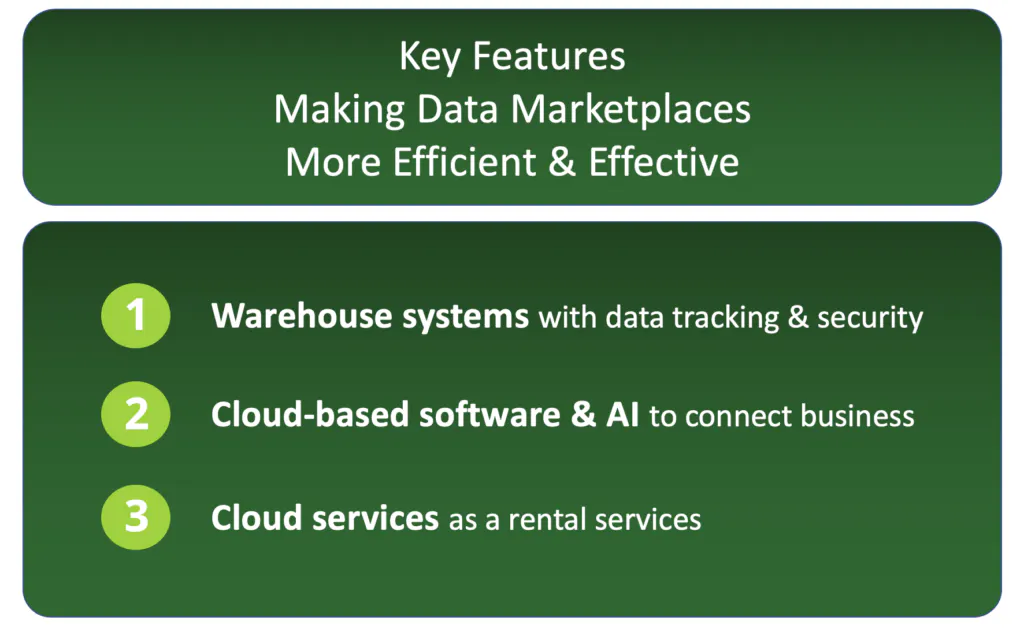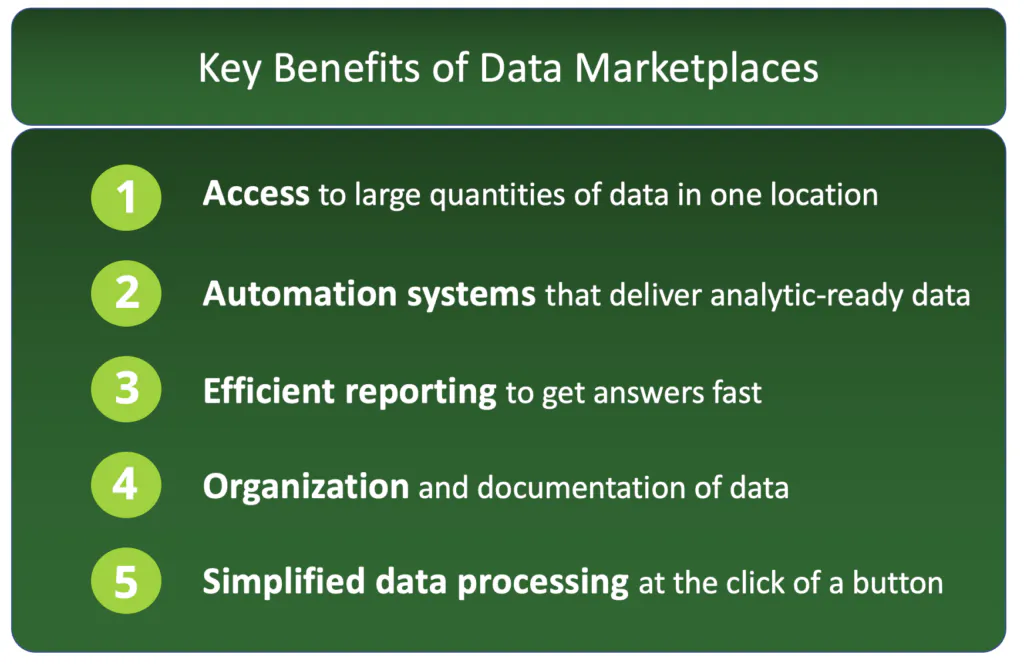The last 30 years have seen the marketers’ toolkit explode with breakthrough technology. The emergence of AI algorithms, data-mining, and cloud computing has allowed for huge leaps forward in the ability to target consumers. This has led to game-changing advantages for early adopters who both understood the importance of tech and could afford to invest in it.
As we see continued growth all across tech there is greater availability, affordability, and ease of use around these tools. Moving forward the savvy use of data—the fuel of these tech tools—may become the deciding factor in which brands rise to the top. Not only will more companies make data a key part of their business, but they will also begin monetizing their own data. Current forecasts report that data monetization is projected to reach $11.7B million globally by 2026.
Clearly, we are living in a big data boom. This paradigm shift is influencing how marketers access, manage, and deploy their data efficiently. Enter, data marketplaces.
The Shift to Data Marketplaces
Marketplaces have come to dominate the data industry because they make it easier to combine data sets and help companies access the right ones. But they are not the first of their kind—rather, data marketplaces are simply the industry’s latest data-access solution in an evolutionary chain that’s been transforming since the 1980s. (According to Edd Dumbill, an analyst for O’Reilly Radar, the history of data markets goes back to the mid-1800s when Reuters began making stock exchange prices available between Paris and London—but that’s another story for another time).

In more recent history, data repositories have evolved over time from the simple databases and warehouses of the 20th century to data lakes in the 2010s, and now to the modern data marketplace.
The holy grail has always been “one repository to store it all” but up until now, that hasn’t been possible. The question is, do data marketplaces make it possible? There are a few key features making data marketplaces a more likely answer than anything that’s come before:
1. Warehouse systems
First, and most importantly, a good data marketplace should include warehouse systems that track data lineage, catalog defining elements of data, and maintain tight quality and security controls. (Source)
2. The cloud meets AI
Taking the next step, cloud-based data marketplace software combined with AI—like Snowflake and Databricks—is connecting businesses with all the power of Big Data without the massive infrastructure and intense data storage requirements.
3. Cloud services
The tidal wave of acceptance and adoption around cloud services has also opened up avenues for big development in marketplaces never before possible. In technical terms, cloud-tech allows data marketplaces to offer their solutions as a rental service. Companies can share content and use the tools without having to manually transfer it into their own environments. (Source)
While these features make data marketplaces more efficient and effective than anything that’s come before, they still don’t answer the question of “why?” If we move beyond the surface, what benefits are driving this shift to data marketplaces—and most importantly, what will this shift enable companies to do?
The Undeniable Benefit of Efficiency at Scale
Plainly put, data marketplaces make life a whole lot easier. By automating almost every aspect of data mining, processing, and sales, they allow businesses to tap into game-changing information that affects almost every department. Let’s take a look at exactly why they are so powerful:
Access
With database marketplaces, companies now have more access to data sets in one single location. Marketplace options, like Snowflake, advertise giving access to over 90 sources of data (and likely use many, many more), and healthcare-centric Prognosis Marketplace states they have hundreds of sources and provide more than 45 billion healthcare records on 325 million de-identified patients. The sheer amount of data a business can pull from using a marketplace is unbeatable.
Automation
Hand in hand with these big processing numbers is the AI-driven sequencing of data inside a marketplace. These automated data management systems simplify and scale delivery of analytics-ready data. And they weren’t built just for specialists or analysts; in fact, data marketplaces often employ data scientists to help remove that burden from businesses. (Source)
Faster Answers
Self-service puts managed data directly into the hands of business users. Over three-fourths of data analysts say almost half of their work time is spent preparing custom reports at the whim of their business teams. This huge time suck hinders the business’s ability to get ahead when using Big Data. However, reporting can now be replicated over time and finished faster than ever before with major players claiming data cohorts can be pulled in less than a minute and that queries are processed 15-20x faster than previous data solution iterations.
Organization
Trying to manage, review, and catalog the huge number of data sources in any given industry is incredibly overwhelming. This makes it absolutely critical for businesses to have an integrated data catalog of technical and business metadata. Without a data solution that organizes, documents, and describes all data in the data collection, there’s no hope of moving beyond basic analytics. This organization gives every piece of data some measure of utility, whatever it’s ranking, because there is now organization where before there was just a data swamp. (Source)
Simplification
Traditional methods of data processing required managing multiple vendors. The widened scope of modern data marketplaces reduces complexity, cost, and overhead by providing integrated services that are ready at the click of a button. Not only does this avoid wasting time and resources, but it also mitigates risks for problems around compliance and quality control. In the past, data analysts were held hostage to all the challenges of vendor management (invoicing, payments… all the inconveniences of working with a middleman) and were left pulling from stale, stagnant data lakes. In contrast, data marketplaces create a single point of contact and a seamless data supply chain, from access to deployment, that’s available with the click of a button.
Moving Forward Proactively
We’ve come a long way. But the work to be done around optimizing data and its use isn’t complete. “Data lakehouses” are the latest innovation in marketplace technology. Companies like OECD and Data.gov, Snowflake, and the Google data marketplace combine data lakes with data warehouses, which provide the tools to perform queries and analysis of information. These powerful marketplace options also continue innovating the data cloud and regularly announce partnerships with other data specialists to increase their stake in data science and protection.
As more and more data becomes available, methods for the purchase, download, and digestion of data will become easier to manage and harder to succeed without. While marketplaces have been around for some time, fear of onboarding and managing new technology has held back some businesses from investment. However, the benefits of efficiency at scale are undeniable with greater access, automation, faster answers, organization, and simplification.
Marketers should not downplay the role of data marketplaces, as they will continue to increase the quality of business results and save them massive amounts of time and money. The key considerations of data marketplaces at large—including innovating cloud-based, software-only data lakehouse options—make Big Data more accessible, and more of a no-brainer, than ever before.






